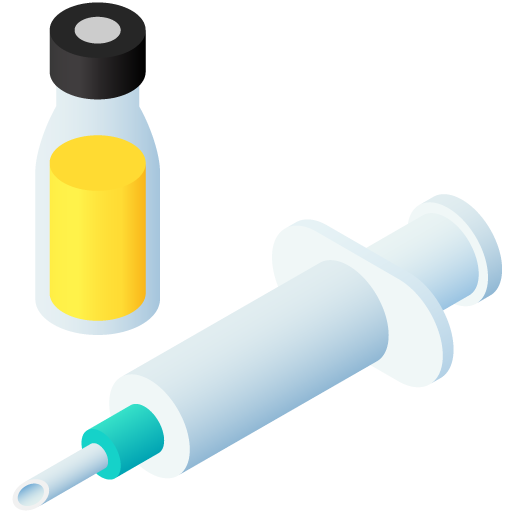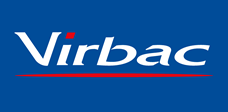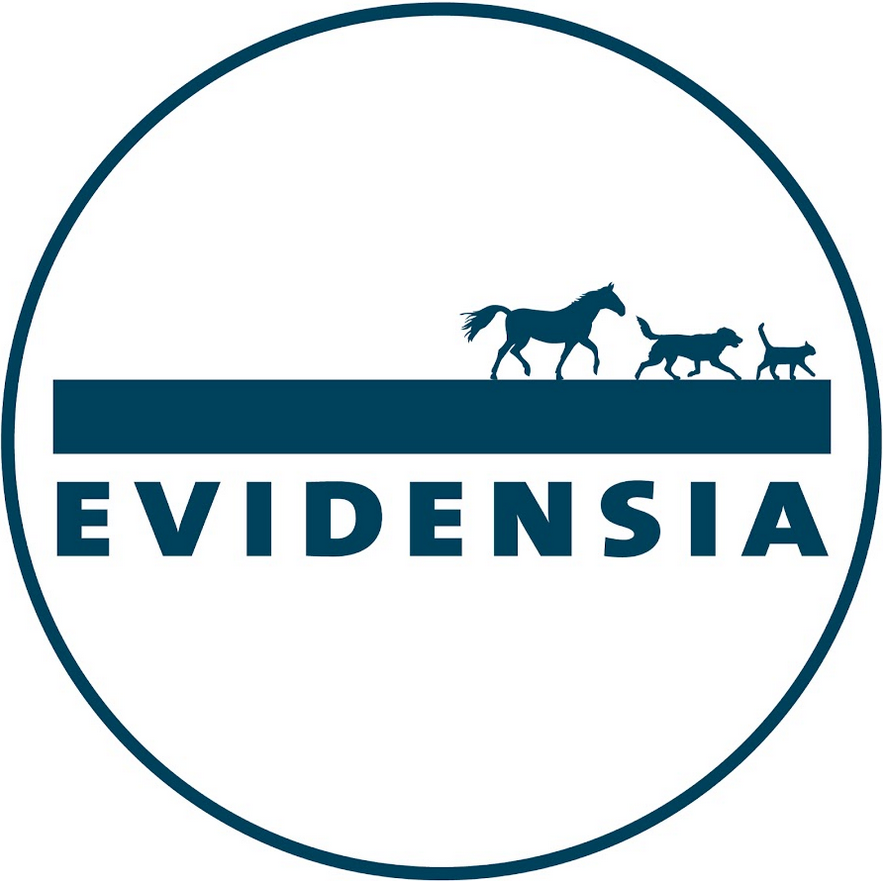Combination therapy
No results were found for your selected species
Porcilis PCV
Active substance
ATC code
Species
Pigs.
Indications
For the active immunisation of pigs to reduce the virus load in blood and lymphoid tissues and to reduce mortality and weight loss associated with PCV2 infection occurring during the fattening period.
Onset of immunity: 2 weeks.
Duration of immunity: 22 weeks.
Dose to be administered and administration route
Before using the vaccine, allow it to reach room temperature and shake well before use. Avoid multiple vial broaching. Use sterile syringes and needles. Avoid introduction of contamination. Avoid use of vaccination equipment with rubber parts.
Vaccination
Administer one dose of 2 ml by intramuscular injection in the neck, in the area behind the ear, according to the following schedule:
In the case of low to medium levels of maternally derived antibodies against PCV2 a single vaccination (2 ml) to pigs from an age of 3 weeks onwards is advised.
When it is expected that higher levels of maternally derived antibodies against PCV2 are present, the following schedule of two vaccinations is advised: the first injection (2 ml) can be given from an age of 3 – 5 days, the second injection (2 ml) 2 – 3 weeks later.
High levels of MDA may be expected when sows/gilts are vaccinated against PCV2 virus or when sows/gilts have recently been exposed to high levels of PCV2 virus. In such cases it is advised to perform PCV2 serology, using suitable diagnostics, to select the most appropriate vaccination schedule. In case of doubt, apply the two shot vaccination schedule.
Adverse reactions
Pigs:
|
Very common (>1 animal / 10 animals treated): |
Injection site swelling1, Elevated temperature2. |
|
Common (1 to 10 animals / 100 animals treated): |
Hypersensitivity reaction3. |
|
Uncommon (1 to 10 animals / 1,000 animals treated): |
Elevated temperature4, Depression5, Reduced food intake5. |
|
Very rare (<1 animal / 10,000 animals treated, including isolated reports): |
Anaphylactic-type reaction6. |
1 In the form of a hard, warm and sometimes painful swelling (diameter up to 10 cm). These reactions resolve spontaneously over a period of approximately 14 – 21 days without any major consequence on the general health status of the animals.
2 Normally not exceeding 1 °C, observed until 2 days after vaccination.
3 Resulting in minor neurological symptoms such as tremors and/or excitation, which normally resolve within minutes without requiring treatment.
4 In individual animals, an increase of rectal temperature of 2.5 °C lasting less than 24 hours.
5 Up to 5 days, may result in transient impairment of growth rate in the immediate period after the administration of the vaccine.
6 May be life-threatening. In the event of such reactions, treatment may be needed.
Reporting adverse events is important. It allows continuous safety monitoring of a veterinary medicinal product. Reports should be sent, preferably via a veterinarian, to either the marketing authorisation holder or the national competent authority via the national reporting system. See the package leaflet for contact details.
Dispensing
POM-V - Prescription Only Medicine – VeterinarianSUMMARY OF PRODUCT CHARACTERISTICS
1. NAME OF THE VETERINARY MEDICINAL PRODUCT
Porcilis PCV emulsion for injection for pigs
2. QUALITATIVE AND QUANTITATIVE COMPOSITION
Each dose of 2 ml contains:
Active substance:
Porcine circovirus type 2 ORF2 subunit antigen: ≥3720 AU*
* Antigenic Units as determined in the in vitro potency test (AlphaLISA).
Adjuvants:
Dl-α-tocopheryl acetate 25 mg
Light liquid paraffin 346 mg
Excipients:
For the full list of excipients, see section 6.1.
3. PHARMACEUTICAL FORM
Emulsion for injection.
Opalescent white, with brown resuspendable sediment.
4. CLINICAL PARTICULARS
4.1 Target species
Pigs
4.2 Indications for use, specifying the target species
For the active immunisation of pigs to reduce the virus load in blood and lymphoid tissues and to reduce mortality and weight loss associated with PCV2 infection occurring during the fattening period.
Onset of immunity: 2 weeks
Duration of immunity: 22 weeks.
4.3 Contraindications
None
4.4 Special warnings for each target species
From the data provided, it can be concluded that a single dose regimen of vaccination breaks through up to medium levels and double dose regimen through medium to high levels of maternally derived antibodies in piglets. No data are available on the use of the vaccine in breeding boars.
4.5 Special precautions for use Special precautions for use in animals
Vaccinate only healthy animals.
Special precautions to be taken by the person administering the veterinary medicinal product to animals
To the user:
This veterinary medicinal product contains mineral oil. Accidental injection/selfinjection may result in severe pain and swelling, particularly if injected into a joint or finger, and, in rare cases, could result in the loss of the affected finger if prompt medical attention is not given. If you are accidentally injected with this product, seek prompt medical advice even if only a very small amount is injected and take the package insert with you. If pain persists for more than 12 hours after medical examination, seek medical advice again.
To the physician:
This veterinary medicinal product contains mineral oil. Even if small amounts have been injected, accidental injection with this product can cause intense swelling, which may, for example, result in ischaemic necrosis and even the loss of a digit. Expert, PROMPT, surgical attention is required and may necessitate early incision and irrigation of the injected area, especially where there is involvement of finger pulp or tendon.
4.6 Adverse reactions (frequency and seriousness)
In laboratory studies and field trials:
Transient local reactions at the injection site were very commonly observed after vaccination mainly in the form of a hard, warm and sometimes painful swelling (diameter up to 10 cm). These reactions resolve spontaneously over a period of approximately 14–21 days without any major consequence on the general health status of the animals. Immediate systemic hypersensitivity-like reactions were commonly observed after vaccination, resulting in minor neurological symptoms such as tremors and/or excitation, which normally resolve within minutes without requiring treatment. A transient increase in body temperature, normally not exceeding 1 °C, was very commonly observed until 2 days after vaccination. In individual animals, an increase of rectal temperature of 2.5 °C lasting less than 24 hours was uncommonly observed.
In some piglets depression and a reduced feed intake for up to 5 days were uncommonly observed. Vaccination may result in a transient impairment of growth rate in the immediate period after administration of the vaccine.
In post marketing experience:
In very rare cases anaphylactic-type reactions can occur, which may be lifethreatening. In the event of such reactions, treatment may be needed.
The frequency of adverse reactions is defined using the following convention:
- very common (more than 1 in 10 animals treated displaying adverse reactions)
- common (more than 1 but less than 10 animals in 100 animals treated)
- uncommon (more than 1 but less than 10 animals in 1,000 animals treated)
- rare (more than 1 but less than 10 animals in 10,000 animals treated)
- very rare (less than 1 animal in 10,000 animals, including isolated reports treated).
4.7 Use during pregnancy, lactation or lay
Do not use during pregnancy and lactation.
4.8 Interaction with other medicinal products and other forms of interaction
No information is available on the safety and efficacy of this vaccine when used with any other veterinary medicinal product. A decision to use this vaccine before or after any other veterinary medicinal product therefore needs to be decided on a case by case basis.
4.9 Amounts to be administered and administration route
Before using the vaccine, allow it to reach room temperature and shake well before use. Avoid multiple vial broaching. Use sterile syringes and needles. Avoid introduction of contamination. Avoid use of vaccination equipment with rubber parts.
Vaccination
Administer one dose of 2 ml by intramuscular injection in the neck, in the area behind the ear, according to the following schedule:
In the case of low to medium levels of maternally derived antibodies against PCV2 a single vaccination (2 ml) to pigs from an age of 3 weeks onwards is advised.
When it is expected that higher levels of maternally derived antibodies against PCV2 are present, the following schedule of two vaccinations is advised: the first injection (2 ml) can be given from an age of 3–5 days, the second injection (2 ml) 2–3 weeks later.
High levels of MDA may be expected when sows/gilts are vaccinated against PCV2 virus or when sows/gilts have recently been exposed to high levels of PCV2 virus. In such cases it is advised to perform PCV2 serology, using suitable diagnostics, to select the most appropriate vaccination schedule. In case of doubt, apply the two shot vaccination schedule.
4.10 Overdose (symptoms, emergency procedures, antidotes),if necessary
Following the administration of a double dose of vaccine no side effects other than those described in section 4.6 have been observed.
4.11 Withdrawal period Zero days.
5. IMMUNOLOGICAL PROPERTIES
Pharmacotherapeutic group: Inactivated porcine circovirus vaccine. ATCvet code: QI09AA07.
Vaccine to stimulate active immunity against porcine circovirus type 2.
6. PHARMACEUTICAL PARTICULARS
6.1 List of excipients
Dl-α-tocopheryl acetate
Light liquid paraffin
Polysorbate 80
Simethicon
Water for injections
6.2 Major incompatibilities
Do not mix with any other veterinary medicinal product.
6.3 Shelf life
Shelf life of the veterinary medicinal product as packaged for sale: 3 years. Shelf life after first opening the immediate packaging: 8 hours.
6.4 Special precautions for storage
Store in a refrigerator (2 °C – 8 °C).
Do not freeze.
Protect from light.
6.5 Nature and composition of immediate packaging
Cardboard boxes with either 1 or 10 PET vials of 20, 50, 100, 200 or 500 ml.
Vials are closed with a nitryl rubber stopper and a coded aluminium cap.
Not all pack sizes may be marketed.
6.6 Special precautions for the disposal of unused veterinary medicinal products or waste materials derived from the use of such products
Any unused veterinary medicinal product or waste materials derived from such veterinary medicinal products should be disposed of in accordance with local requirements.
7. MARKETING AUTHORISATION HOLDER
MSD Animal Health UK Limited
Walton Manor
Walton
Milton Keynes
Buckinghamshire MK7 7AJ
8. MARKETING AUTHORISATION NUMBER
Vm 01708/5054
9. DATE OF FIRST AUTHORISATION
12 January 2009
10. DATE OF REVISION OF THE TEXT
September 2021

Approved: 10 September 2021
 TRUSTED SOURCE
TRUSTED SOURCE









